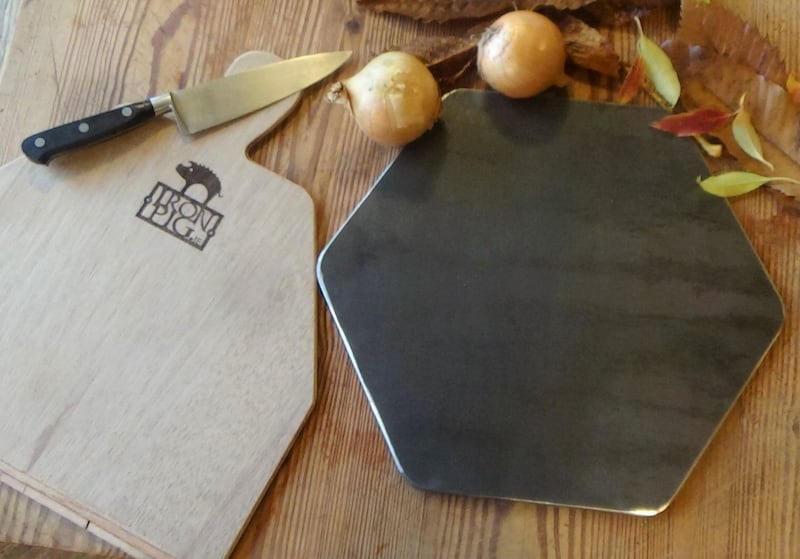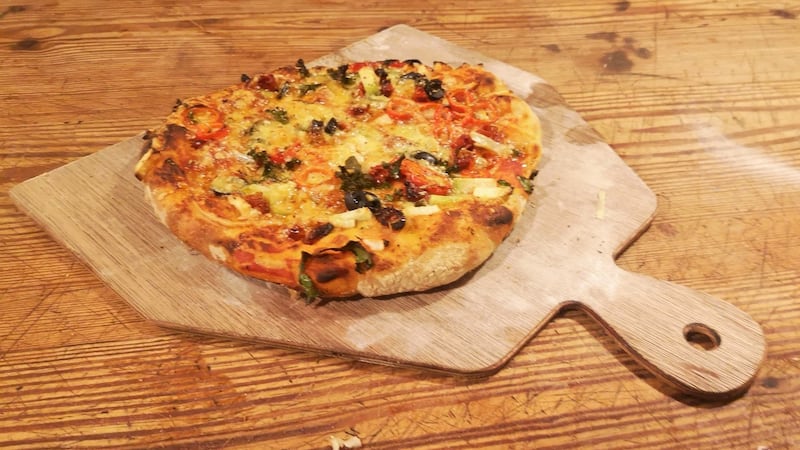If you love your pizza stone but would like to take your homemade Margheritas and quattro stagionis to the next level, you’ve probably thought about investing in a pizza steel. And then backed off, because investing really does seem to be the word: search online and many pizza steels – which tend to be what they say: slabs of steel for cooking pizzas on at temperatures that can crack a cheap pizza stone – cost north of €80 once you take delivery into account, and some top €100.
So, for a better-value – and Irish – alternative you might try Iron Pig, a website that sells pizza steels made by Tim Rowe in west Co Cork. Measuring 36cm by 32cm, and weighing about 4.5kg each, these slabs of 6mm steel are hexagonal, with nicely rounded edges that make the prospect of dropping one on your foot slightly less alarming. Not that you should be shifting it around too much: once the steel is hot, leave it in the oven and use a peel – a wooden version of which Iron Pig also sells, although we already had a metal one from the Kitchen Whisk – to move your pizzas in and out of the oven.
The difference between pizza cooked on a steel and pizza cooked on a stone is something to see (and taste): even with a basic homemade dough all our new pizzas have had crisp bottoms and pleasingly puffy edges.
One drawback you might have spotted is that it’s hard to cater for a family pizza night with a single steel. So we bought two, for €45 each. With the €15 postage – our pair just squeezed under the weight limit for this delivery rate – that makes them about twice the price of good pizza stones – but we think they’re way more than twice as good. (And they’re virtually indestructible, so they should last forever, unlike our now-cracked stones.)


You might have to experiment with the best shelf of your oven to use: ours has a pizza setting that generates extra heat from the bottom of the oven, for nicely crisp bases. So a conventional rather than a fan setting might be worth trying out if your oven doesn’t have a pizza-specific option.
You also have to get quick at moving the pizzas in and out of the oven, so it doesn’t lose too much heat as you swap them around – although the steels stay so hot that this probably isn’t quite as much of a problem as we imagine, especially after they’ve had a good 20 minutes or so to heat up before you start cooking. (They take several hours to cool fully afterwards, so mind your hands.)
Rowe, whose workshop is a former chicken house near Bantry, came up with his design after a friend who's a professional baker complained that he couldn't buy an Irish-made steel. "That sounded like a challenge I couldn't ignore," says Rowe, who experimented with various sizes and thicknesses. "They've been a runaway success, and now we make special-order ones, too, to fit individual ovens."
Iron Pig steels arrive with a coating of coconut oil, ready to season by baking for half an hour or so, to form a protective layer on top of the bare metal. Rowe (whose website also sells hedgehog houses and wheelbarrow henhouses, among other things) includes a great tip for getting a floppy, uncooked pizza on to the steel: prepare it on some baking paper, then, after sprinkling the hot steel with a little polenta, scoop the pizza and paper up together, using a peel or spatulas, to slide on to the steel. After a few minutes you’ll be able to slide the paper out: the base will already be crisp enough to make this easy to do.











